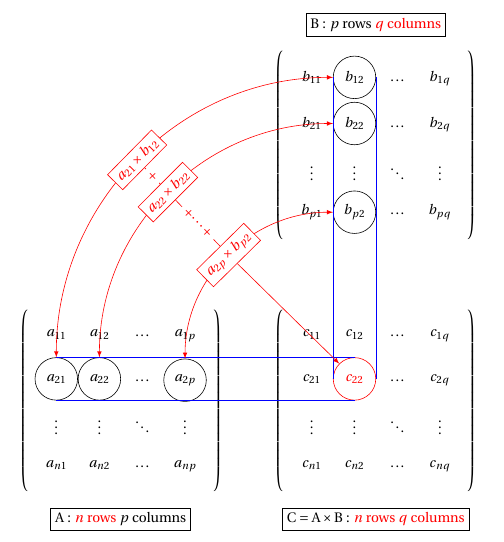\documentclass[]{article}
\usepackage[utf8]{inputenc}
\usepackage[upright]{fourier}
\usepackage{tikz}
\usetikzlibrary{matrix,arrows,decorations.pathmorphing}
\begin{document}
\newcommand{\myunit}{1 cm}
\tikzset{
node style sp/.style={draw,circle,minimum size=\myunit},
node style ge/.style={circle,minimum size=\myunit},
arrow style mul/.style={draw,sloped,midway,fill=white},
arrow style plus/.style={midway,sloped,fill=white},
}
\begin{tikzpicture}[>=latex]
\matrix (A) [matrix of math nodes,
nodes = {node style ge},
left delimiter = (,
right delimiter = )] at (0,0)
{
a_{11} & a_{12} & \ldots & a_{1p} \\
\node[node style sp] (A-2-1) {a_{21}};
& \node[node style sp] (A-2-2) {a_{22}};
& \ldots
& \node[node style sp] (A-2-4) {a_{2p}}; \\
\vdots & \vdots & \ddots & \vdots \\
a_{n1} & a_{n2} & \ldots & a_{np} \\
};
\node [draw,below=10pt] at (A.south)
{ $A$ : \textcolor{red}{$n$ rows} $p$ columns};
\matrix (B) [matrix of math nodes,
nodes = {node style ge},
left delimiter = (,
right delimiter =)] at (6*\myunit,6*\myunit)
{
b_{11} & \node[node style sp] (B-1-2) {b_{12}};


@rnivelle Les formules de politesse et les signatures sont à éviter : celle(s) de votre contribution a (ont) été supprimée(s).